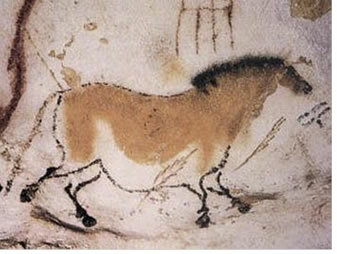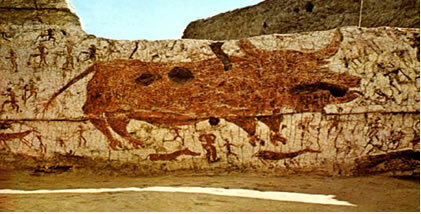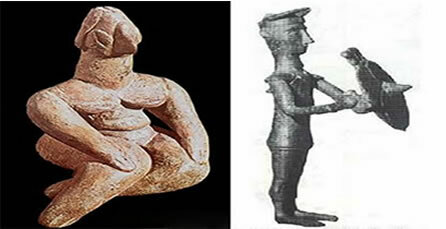Prehistory is a long moment in history. Grace Proença in your book art history divides prehistoric art into two: Upper Paleolithic art and Neolithic art. We will observe that the man from the Upper Paleolithic worked his art in a simplistic and natural way, so the main characteristic of this moment is the naturalism. The artist reproduced exactly what he visualized. He knew how to use colors and give his own style to his artistic productions. That is why we cannot and should not compare them to drawings made by a child.
Rock art is the name given to these pictorial representations. These paintings were mostly done on rocks and cave walls. The productions were represented by figures of animals, people, a mixture of people and animals, vegetables, geometric figures and solar symbols. Similar numerical representations with the days of the week and others showing the seasons of the year were also found.
For archaeologists, the interpretation of these figures was often complex. The most logical explanation for them was that this art was produced by hunters and was part of a ritual that would help them in the hunt, with this the paleolithic man believed in the success of the hunt and that he would kill a real animal as long as it possessed its image painted; for the artist, the figure of an animal was not just a figure, but the animal itself.
At that time man was, in essence, hunter and gatherer. Such activities made man nomadic, as he was forced to travel long distances to provide his food. When analyzing this situation, we realize that the Paleolithic man neither controlled nor transformed nature in favor of his subsistence. In fact, he was an integral part of her.
Cave paintings were found in various parts of the world, such as in the Caves of Chauvet (France 1994), Lascaux (France 1994), Altamira (Spain 1868), the latter, was the first production discovered, but the veracity of the paintings was only recognized in 1902. At Rhodesian Cave, in the African Continent, there are productions dated with more than forty thousand years. Many works found in the Caves of Chauvet are much more developed in relation to others from the same period. Prehistoric men used shading and perspective techniques that were only used thousands of years later, more specifically during the Renaissance.

One of the cave paintings found in the Cave of Lascaux, France
The artists of this period also carried out work on sculptures, it is possible to notice the absence of the male figure, both in paintings and in sculptures. It is believed that the presence of female representation is due to the belief that small figurines females would be amulets related to the cult of fertility, a decisive factor for the survival of the group. In this work stands out: the Venus of Willendorf.
Do not stop now... There's more after the advertising ;)

Rock Sculpture titled Venus of Willendorf
The last period of prehistory, the Neolithic, was characterized by the techniques of construction of weapons and instruments with stones polished by friction, but in addition to this technical improvement, the most important event of this period was the habit of planting, harvesting for their own subsistence and domestication. animal. Through this nomadic practices were replaced by a more stable way of life.
Thus, man created the technique of weaving cloth, making pottery, creating sculptures and building the first houses. He also achieved mastery of fire. The way of drawing and painting, as well as their themes, underwent transformations. In addition to painting animals, the artist of that period started to represent people in their daily activities, in artistic productions. The Neolithic artist showed concern with the beauty and not just the usefulness of the object
In this context, there is a challenge in the artistic technique, giving the idea of movement through the fixed image, so they started to create figures with small lines that appear light and agile. The writer Graça Proença believes that From these drawings emerges, therefore, the first form of writing, the pictorial writing, which consists of representing beings and ideas through the figures.

Lightness, movement and lines in paintings from the Neolithic Period

Big Red Bull Surrounded by Hunters.Catal Huyuk, Anatolia. Neolithic

Neolithic Sculpture; Neolithic Bronze Sculpture, Pigorini Museum, Rome
All these transformations had a great impact on art, now the Neolithic man started to have his senses refined no longer for hunting but for abstraction, subjectivity and rationalization. In the Neolithic men began to bury the dead and this act showed more directed feelings towards their own. The knowledge of that time is the result of years of research in anthropology, history and archeology, which reconstructed the culture of these men. The importance of art in prehistory is not only due to the possibility of interpreting artistic productions discoveries, but much to clarify the reality of a time, and we cannot forget what the historian Marc said Bloch, man is the fruit of his time.
By Lilian Aguiar
Graduated in History
Brazil School Team
